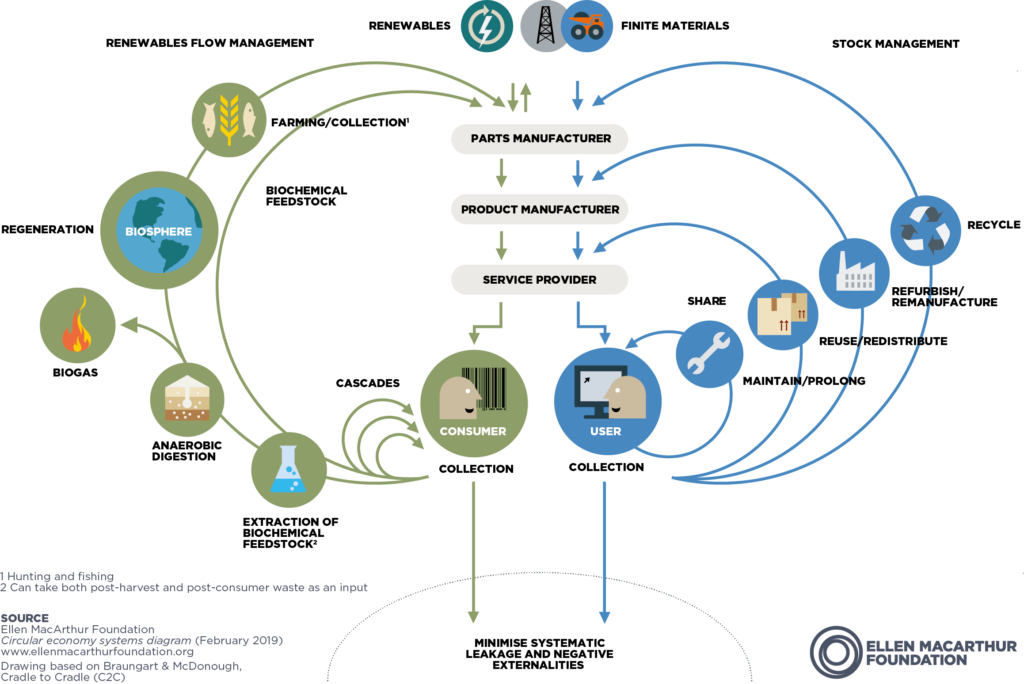Ensuring the global community rallies together to prevent the dire impacts of climate change is not a sure thing, as the modest achievements from the most recent COP27 conference demonstrated. Still, many people, groups and even countries are working hard to reverse course on the “take > make > waste” linear economy we are all enmeshed in now.
They are driving us toward a circular economy, where finite materials are shared, reused, refurbished, remanufactured, and recycled while renewables, agriculture in particular, are used as components or feedstock of another process down the line while land is allowed to regenerate.
The Ellen MacArthur Foundation describes it like this:

The circular economy is governed by three principles:
- Eliminate waste and pollution
- Circulate products and materials at their highest level
- Regenerate nature
It is the first principle, eliminating waste and pollution, where SHIFT Energy’s clients can make an immediate impact. Operators of large facilities – hospitals, college campuses, office towers, shopping malls – can rarely influence the sources of electricity used to heat, cool and power their facility. The utility provides electricity that is often still produced through thermal sources like natural gas or even coal. These “Scope 2” emissions are one of the largest Greenhouse Gas emissions, accounting for at least one-third of emissions globally. In some cases, renewable energy isn’t available, or available at the scale required, to swap out for thermal energy.
Sustainability is mission critical for every large business today. The public markets and regulators are keeping a close watch on carbon emissions from the built environment. Many investment decisions are now made based on a company’s ESG (Environment, Social, Governance) profile and the regulatory environment may soon reward those ahead of the carbon emissions curve while punishing those who lag behind.
The move to a circular economy requires a transition, particularly from large, established industries. Mitigating emission from your large buildings can be difficult without the ability to directly influence the sources of energy used every day and with the somewhat limited abilities of existing control systems. Solving the problem of helping buildings address their energy consumption and carbon emissions is what inspired SHIFT Energy to develop our Energy Optimization Software (EOS), a solution that uses Artificial Intelligence and other approaches to automatically optimize building HVAC performance, including chillers and boilers. The key to this solution is that it works with existing building control systems and infrastructure – no new equipment is required.
We’ve deployed this solution across North America, with rapid results. Most SHIFT clients have experienced energy cost reductions of between 10 and 20 percent and have seen a significant reduction in carbon emissions. These results mean that the cost to deploy the SHIFT solution is usually recouped in just one year, while the cost and environmental savings it delivers can be enjoyed year after year.
Sustainability initiatives that cut carbon emissions in the built environment are an important part of the transition to our new shared reality. SHIFT allows big building operators to cut energy consumption and carbon emissions without expensive new equipment while still keeping tenants comfortable. The road to net zero buildings is a complicated journey. Working together, we can take a significant step toward reaching that destination.

